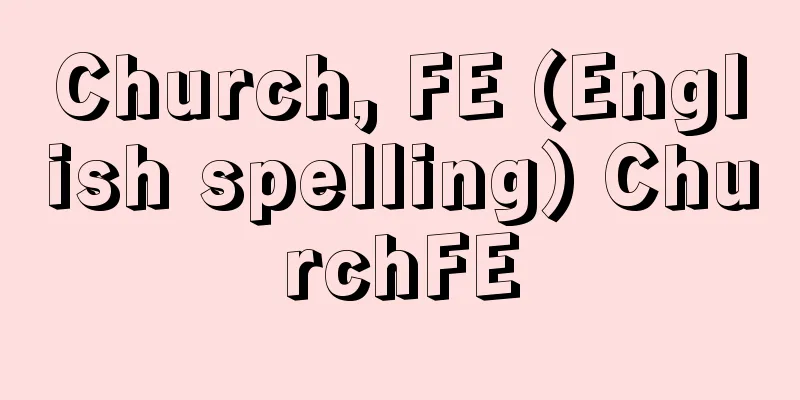Horror stories - kaikishosetsu

|
It is also called horror fiction or supernatural story. Nowadays, the term horror is more commonly used. Apart from the ghost stories found in ancient myths, legends, and tales, the strange novel as a modern literary work originated from the Gothic novel, which was born in 18th century England. Gothic novels dealt heavily with the supernatural, and following Walpole's The Castle of Otranto (1764), Lewis, Radcliffe, and others were active. The ghosts that haunt old castles, the devil worship of monks, and the appearance of unimaginable monsters such as vampires and werewolves piqued the interest of readers, and Gothic novels became widely popular. In the 19th century, Mary Shelley published Frankenstein (1818) against the backdrop of the Industrial Revolution. This work was the starting point for the development of science themes into science fiction in later years, and horror themes into strange novels. That is to say, world-class writers such as Poe, Bierce, Gautier, Maupassant, E. T. A. Hoffmann, Merimee, and Gogol favored works with the supernatural as a theme, and horror stories gradually moved away from the medieval atmosphere of Gothic novels. In the second half of the 19th century, two writers who specialized in horror stories appeared in England, Le Fanu and Bram Stoker, who were considered the last successors of Gothic novels. Eventually, in addition to doppelgangers and split personalities, as in Stevenson's Dr. Jekyll and Mr. Hyde (1886), the immortal, and even necromancy and clairvoyance, which were popular at the time, became ideal motifs for horror stories. In the 20th century, Britain entered its golden age with the emergence of such masters as Saki, A. Machen, Blackwood, and M. R. James. While following the themes of Gothic novels, they used the techniques of psychological novels to depict supernatural phenomena and human drama in an age when scientific rationalism was all-powerful. Meanwhile, in the United States, the era of pulp magazines began, and magazines specializing in strange novels appeared alongside magazines specializing in mystery novels and science fiction, and became popular with sensational illustrations. Among them, Lovecraft, who wrote the series of stories known as the Cthulhu Mythos, depicting the terror of outer space approaching the Earth, opened up a new frontier in the field of strange novels. Strange novels after Lovecraft are called modern horror. Their modernity lies in introducing science fiction themes into strange novels and depicting fears and nightmares in the everyday lives of ordinary citizens. With the appearance of Lovecraft, horror fiction deepened its relationship with science fiction, and many science fiction writers, including Bradbury, tried their hand at horror fiction, and now it ranks third in entertainment literature after detective fiction and science fiction. In recent years, America has led the field, with modern horror writers such as Stephen King, Dean R. Koontz, and Robert McCammon among others. [Jun Atsugi] [References] | | | | | | | | | | | |Source: Shogakukan Encyclopedia Nipponica About Encyclopedia Nipponica Information | Legend |
|
恐怖小説horror fiction、超自然物語supernatural storyともいわれる。現在ではホラーというよびかたが一般化している。古代の神話、伝説、説話などに含まれる怪談とは別に、近代文学としての怪奇小説は、18世紀イギリスに生まれたゴシック小説に端を発する。ゴシック小説では怪奇趣味が濃厚に扱われ、ウォルポールの『オトラント城綺譚(きたん)』(1764)に続き、ルイス、ラドクリフらが活躍する。古城に出没する幽霊、修道僧の悪魔崇拝、吸血鬼、人狼など想像を絶する怪物の出現が読者の関心をそそり、ゴシック小説は広く流行した。19世紀に入ると産業革命を時代背景にシェリー夫人(メアリー・シェリー)が『フランケンシュタイン』(1818)を発表。この作品を起点として、科学主題は後年のSFへ、恐怖主題は怪奇小説へと展開をみせる。すなわち、ポー、ビアース、ゴーチエ、モーパッサン、E・T・A・ホフマン、メリメ、ゴーゴリら世界の一流作家が、好んで怪奇を主題とする作品を手がけ、怪奇小説はゴシック小説の中世紀的雰囲気から徐々に脱け出す。19世紀後半、イギリスではゴシック小説最後の後継者と目されるレ・ファニュ、ブラム・ストーカーの2人の怪奇小説専門作家が登場。やがてスティーブンソンの『ジキル博士とハイド氏』(1886)のように、分身、二重人格に加えて、不死者、さらには当時流行の降霊術、透視術が怪奇小説の格好のモチーフになった。 20世紀になるとイギリスでは、サキ、A・マッケン、ブラックウッド、M・R・ジェームズらの巨匠が登場して黄金時代を迎える。彼らはゴシック小説の主題を踏襲しながら、心理小説の手法を使い、超自然現象と人間のドラマを、あえて科学的合理主義万能の時代に描いてみせた。一方、アメリカではパルプ・マガジン時代を迎え、推理小説やSFの専門誌と肩を並べて怪奇小説専門誌が輩出し、扇情的イラストに飾られて流行した。なかでも1923年創刊の『ウィアード・テイルズ』誌に拠(よ)るラブクラフトは、外宇宙から地球に迫る恐怖をクトゥルー神話大系といわれる連作で描き、怪奇小説の分野に新生面を開いた。ラブクラフト以降の怪奇小説をモダン・ホラーとよぶ。その現代性は、SF的主題を怪奇小説に導入し、平凡な市民生活のなかに恐怖や悪夢を描くことにある。ラブクラフトの登場を契機として怪奇小説はSFと交流を深め、ブラッドベリら多数のSF作家が怪奇小説に手を染め、いまや娯楽文学の領域では推理小説、SFに次ぐ存在を占めている。近年この分野をリードしているのはアメリカで、モダン・ホラーの専門作家としては、スティーブン・キング、ディーン・R・クーンツ、ロバート・マキャモンなどがいる。 [厚木 淳] [参照項目] | | | | | | | | | | | |出典 小学館 日本大百科全書(ニッポニカ)日本大百科全書(ニッポニカ)について 情報 | 凡例 |
<<: Founding treasure - Kaikishoho
Recommend
Mikadotrochus beyrichi (English spelling)
This is an illustration of a gastropod from the fa...
Asbach - Asbach
...These names are permitted only for products th...
"Lulu or the Skywalk" (English: Lulu or the Skywalk)
...It belongs to the Singspiel, a popular opera s...
National Foundation Day - Kenkokukinenbi
Of the independent countries currently existing in...
Blue Medaka - Ao Medaka
...In particular, the Himedaka bred in captivity ...
Arimura Jizaemon
Year of death: March 3, 1860 (March 24, 1860) Year...
Yoshitoshi Tsukioka
An ukiyo-e artist from the late Edo to the Meiji ...
Garner, A.
...C.S. Lewis dealt with issues of good and evil ...
Light of Learning
… [Yusaku Ozawa] [Literature by Koreans in Japan]...
Princes Islands
…This inland sea was formed by a depression and h...
ALPAC Report - ALPAC Report
...However, the lack of progress in translation d...
Frappe (English spelling) frappé (France)
1. Shaved ice. Or shaved ice topped with ice cream...
Kokoro - Heart
A full-length novel by Natsume Soseki. It was ser...
Conrad, AH (English spelling) ConradAH
…It took many years and enlightenment efforts by ...
Archaeopteris (English spelling)
A fossil of a protogymnosperm unique to the Late D...









